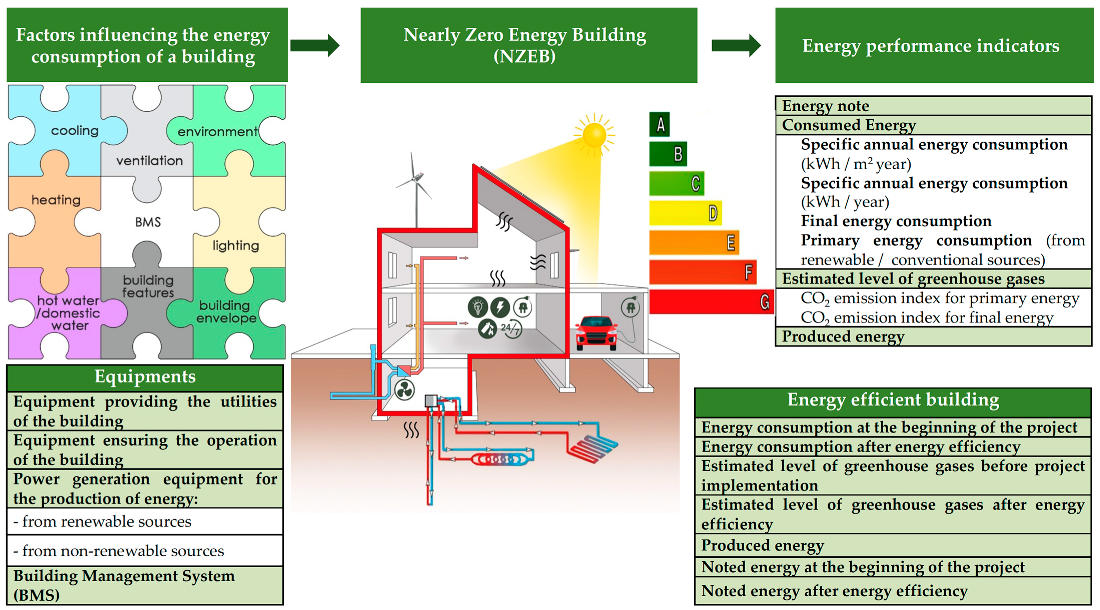When selecting lighting products for energy-efficient buildings, several key factors should be considered to ensure optimal energy savings, functionality, and sustainability. Here are the most important factors:
1. Energy Efficiency
- Consideration: Choose lighting products that are energy-efficient, such as LED or CFL bulbs, which consume significantly less power than traditional incandescent bulbs.
- Impact: Energy-efficient lighting reduces electricity consumption, lowering energy bills and contributing to the building’s sustainability goals.
2. Lumens and Brightness
- Consideration: Evaluate the lumens (brightness) of the light bulbs. Energy-efficient bulbs should provide the necessary brightness while consuming minimal energy.
- Impact: Selecting bulbs with the correct brightness for each space ensures efficient illumination without wasting energy.
3. Color Temperature and Quality of Light
- Consideration: Consider the color temperature (measured in Kelvins) of the lighting, which affects the ambiance and functionality of spaces. Warm white lights are ideal for living areas, while cool white or daylight are better suited for workspaces.
- Impact: The right color temperature enhances the visual comfort of a space, improves productivity, and promotes the desired mood.
4. Color Rendering Index (CRI)
- Consideration: Choose lighting with a high Color Rendering Index (CRI) (above 80 or 90) to ensure that colors appear true to life, especially in spaces where aesthetics are important, such as retail or art galleries.
- Impact: High CRI lights provide better visibility and color accuracy, improving both the aesthetic and functional aspects of the space.
5. Dimmability
- Consideration: Opt for dimmable lighting products that can adjust light levels to suit different tasks and moods.
- Impact: Dimming features reduce energy consumption by lowering light levels when full brightness is not needed, and they increase the lifespan of the bulbs.
6. Lighting Control Systems
- Consideration: Incorporate lighting control systems like motion sensors, timers, and smart lighting systems. These systems automatically adjust lighting based on occupancy, ambient light levels, or time of day.
- Impact: Automated lighting control ensures that lights are only used when needed, significantly reducing energy waste and improving energy management.
7. Lifespan and Durability
- Consideration: Select lighting products with a long lifespan, such as LED bulbs, which can last up to 25,000 to 50,000 hours, reducing the need for frequent replacements.
- Impact: Long-lasting bulbs lower maintenance costs, reduce waste, and ensure continued energy efficiency for a longer period.
8. Light Distribution and Coverage
- Consideration: Evaluate how the light is distributed. Choose fixtures that provide even illumination and are suitable for the size and layout of the space.
- Impact: Proper light distribution ensures that all areas are well-lit without overlighting or underlighting, improving energy efficiency and user comfort.
9. Building Design and Zoning
- Consideration: Take into account the building’s design, layout, and lighting zones when selecting products. Consider the use of task lighting, ambient lighting, and accent lighting in various areas.
- Impact: Customizing lighting products for each zone helps reduce energy usage in spaces where less light is required, improving overall energy efficiency.
10. Environmental Impact
- Consideration: Consider the environmental impact of the lighting products, including their recyclability and the presence of hazardous materials like mercury.
- Impact: Eco-friendly products with minimal environmental impact align with green building certifications (e.g., LEED) and contribute to the building’s overall sustainability goals.
11. Smart Lighting Integration
- Consideration: Opt for smart lighting systems that allow integration with other building management systems and offer advanced controls like scheduling, remote control, and real-time energy monitoring.
- Impact: Smart lighting provides more precise control over lighting usage, ensuring that energy is only used when and where needed, thus enhancing energy efficiency.
12. Compliance with Standards and Regulations
- Consideration: Ensure that lighting products meet local energy efficiency standards, such as ENERGY STAR certification or similar energy-saving programs, as well as building codes for lighting.
- Impact: Compliance ensures that the lighting products meet energy efficiency benchmarks, helping the building achieve its sustainability targets and qualify for incentives.
13. Cost-Effectiveness
- Consideration: Evaluate the initial cost versus long-term savings of the lighting product. While energy-efficient bulbs may have a higher upfront cost, their reduced energy consumption and long lifespan result in significant savings over time.
- Impact: Proper cost analysis ensures that the building’s lighting system is both economically feasible and energy-efficient, maximizing the return on investment.
14. Heat Emission
- Consideration: Choose lighting products that emit low heat, especially in spaces like server rooms, kitchens, or areas with high heat load. LED lights generate significantly less heat compared to incandescent or halogen lights.
- Impact: Low-heat emission reduces the need for cooling, contributing to overall energy savings and improving comfort in temperature-sensitive areas.
15. Aesthetic Considerations
- Consideration: Ensure the aesthetic appeal of the lighting fits the architectural style and intended purpose of the space. Lighting design can enhance the visual aesthetics and functionality of an energy-efficient building.
- Impact: Well-chosen lighting enhances the building’s appearance while supporting its energy efficiency goals, creating an attractive, functional, and sustainable environment.
Conclusion:
When selecting lighting products for energy-efficient buildings, it is essential to focus on energy efficiency, control systems, lifespan, and overall performance while considering the specific needs of each space. By choosing the right lighting solutions, buildings can reduce energy consumption, improve occupant comfort, and contribute to sustainability efforts. Integrating smart technologies and adhering to environmental and regulatory standards also plays a crucial role in enhancing both energy performance and user experience.
Hashtags
#EnergyEfficientLighting #SustainableLightingSolutions #EcoFriendlyLighting #GreenLightingForBuildings #EnergySavingLighting #LowEnergyLightingProducts #SustainableLightingDesign #LightingForSustainability #EnergyEfficientBuildingLighting #EcoConsciousLighting #LEDLightingTechnology #SmartLightingSystems #LightingAutomationForEfficiency #IoTLightingSolutions #InnovativeLightingProducts #LightingTechForBuildings #LightingControlSystems #ConnectedLightingForEnergyEfficiency #NextGenLightingTechnology #LightingInnovationInBuildings #BudgetFriendlyLighting #CostEffectiveLightingSolutions #AffordableEnergyEfficientLighting #LightingProductsWithinBudget #LowCostEnergyEfficientLighting #LightingReturnOnInvestment #EnergySavingLightingWithinBudget #CostSavingLightingDesign #EfficientLightingOnABudget #LightingForCostEfficiency














